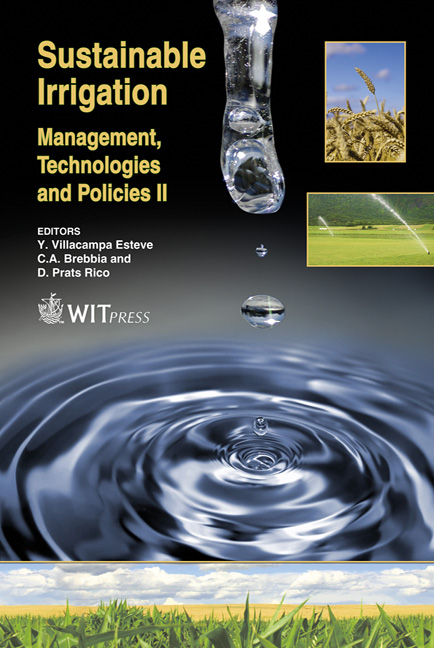Yield And Canopy Response Of Chickpea (Cicer Arietinum L.) To Different Irrigation Regimes
Price
Free (open access)
Transaction
Volume
112
Pages
10
Page Range
123 - 132
Published
2008
Size
473 kb
Paper DOI
10.2495/SI080131
Copyright
WIT Press
Author(s)
M. Rinaldi, A. V. Vonella, P. Soldo, G. Debiase & P. Garofalo
Abstract
In recent years, the interest for legume crops has been increasing in the European Community, both for the agronomic improvement of soil fertility and for human and animal food source reasons. Chickpea (Cicer arietinum L.) in the Mediterranean environment is not usually irrigated. Knowledge about its canopy growth, water and radiation use efficiencies can improve chickpea productivity. In this study, the chickpea has been submitted to different irrigation scheduling at specific crop phases and as a function of soil moisture. Total plant biomass was related to water availability and radiation interception. But in good conditions of available water there was a lengthening of the crop cycle, with reduction of pod growth, harvest index and nutrient toward the seeds. Consequently, the best values of water use efficiency were found in the treatment irrigated with 50 mm only at flowering or at pod filling. Protein yield was higher in the treatment refilling field capacity when soil plant available water was 25%. A canopy extinction coefficient of 0.84 and a radiation use efficiency of 1.02 g MJ-1, on average, were found. In conclusion, the irrigation of the chickpea at sensitive phases (flowering and pod filling) and with a low amount of water, resulted in the best strategies. Keywords: chickpea, water use efficiency, radiation use efficiency, water deficit. 1 Introduction The chickpea is one of the major legume crops grown in Mediterranean regions, where rainfall is highly variable and often insufficient. As the season progresses, the crop is exposed to increasing moisture deficit and heat. This results in low
Keywords
chickpea, water use efficiency, radiation use efficiency, water deficit.





